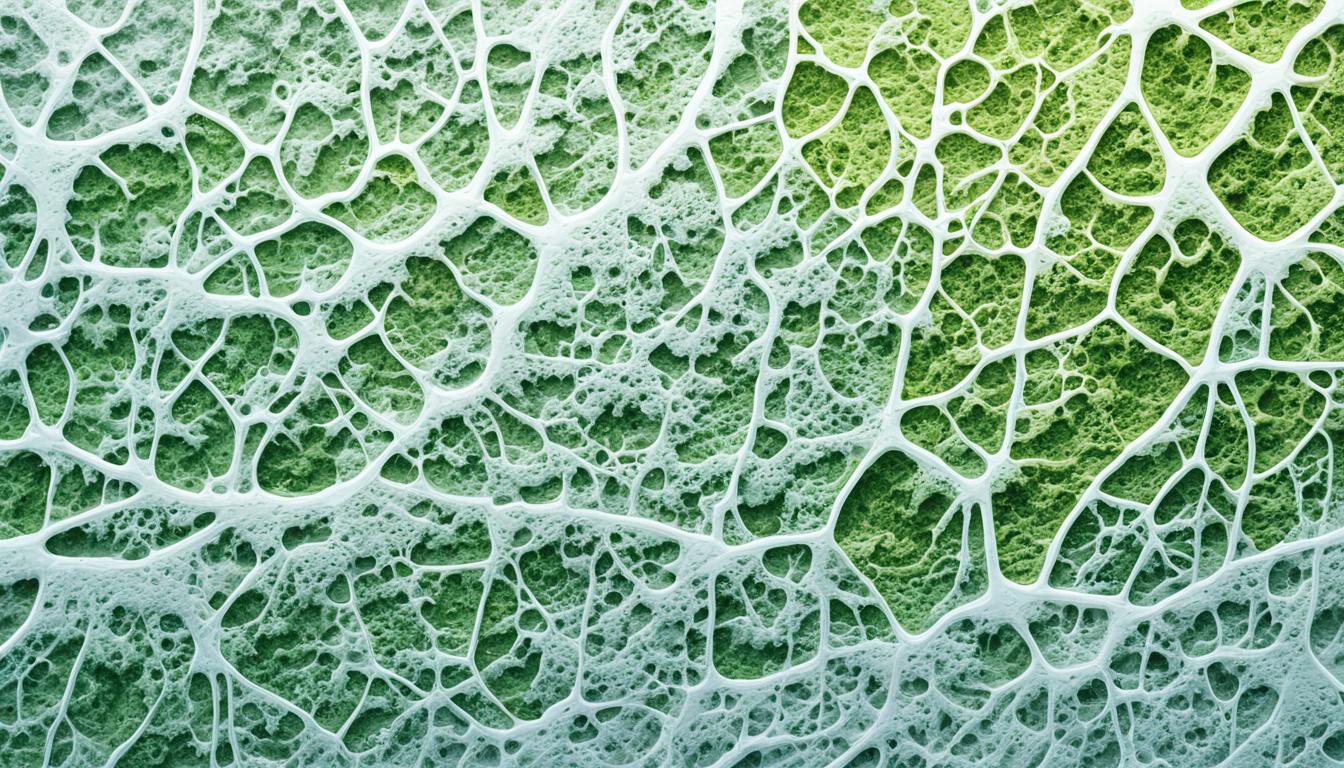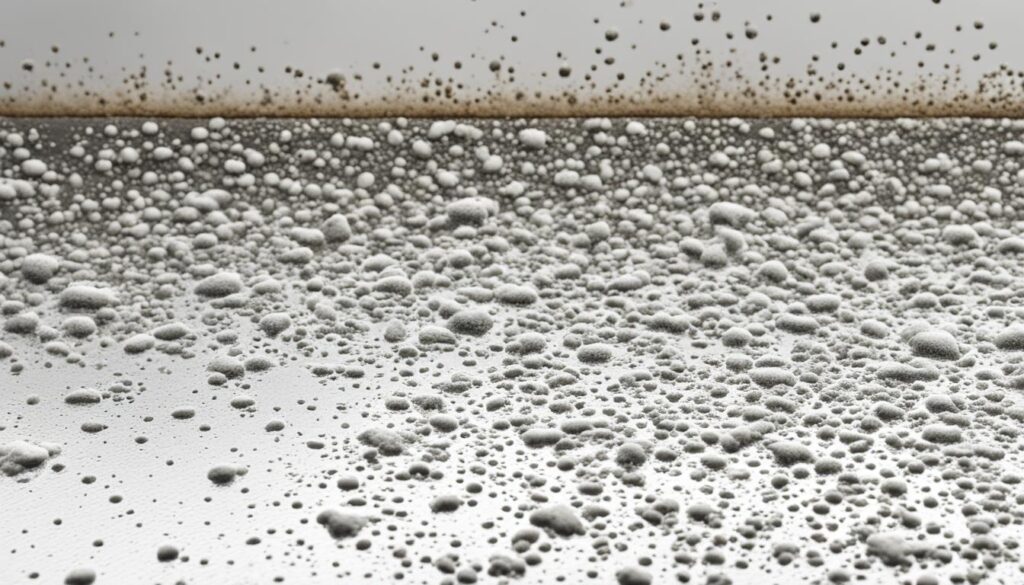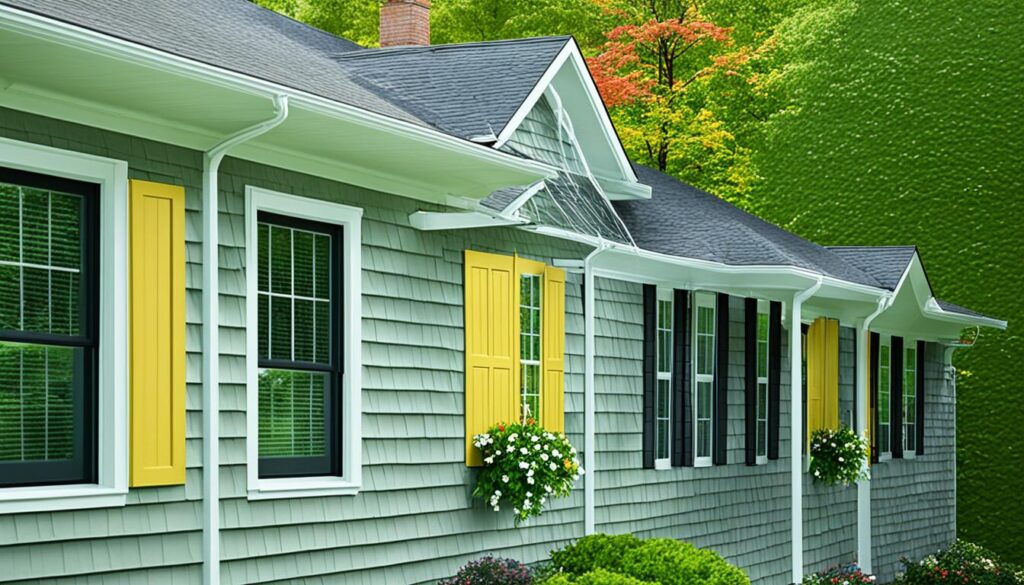
Understanding What’s Mold: Causes & Prevention
Mold can be an unwelcome presence in our homes and buildings, causing not only unsightly stains but also potential health risks. To effectively combat mold growth, it is crucial to understand what mold is, its causes, and how to prevent it. In this article, we will delve into these aspects, equipping you with the knowledge to create a healthier living environment.
Key Takeaways:
- Understanding what mold is and its causes is essential for effective prevention.
- Mold can thrive in environments with excess moisture, poor ventilation, and organic materials.
- Controlling moisture levels, improving ventilation, and maintaining good air quality are crucial in preventing mold growth.
- Regular maintenance tasks, such as proper insulation and effective cleaning practices, can help keep mold at bay.
- When in doubt, it is always recommended to seek professional assistance for mold assessment and remediation services.
The Basics of Mold
In this section, we will start by answering the question “what is mold?” We will discuss the basic definition of mold, its characteristics, and the various types of mold commonly found in indoor environments. Additionally, we will explore the conditions that promote mold growth, including moisture, humidity, and organic materials.
What is Mold?
Mold is a type of fungus that grows in damp and humid conditions. It is made up of tiny, multicellular organisms known as mold spores. These spores are present in the air and can settle on various surfaces. When the conditions are favorable, mold spores can germinate and reproduce, leading to mold growth.
Types of Mold
There are numerous types of mold that can be found in indoor environments. Some common types include:
- Stachybotrys chartarum, also known as black mold
- Aspergillus
- Penicillium
- Cladosporium
- Alternaria
Each type of mold has its own unique characteristics and can have different effects on human health. It is important to identify the type of mold present in your environment to determine the appropriate remediation methods.
Conditions for Mold Growth
Mold requires certain conditions to grow and thrive. The main factors that contribute to mold growth include:
- Moisture: Mold needs a source of moisture to grow, such as water leaks, condensation, or high humidity levels.
- Humidity: High humidity levels, typically above 50%, create an ideal environment for mold growth.
- Organic Materials: Mold feeds on organic materials such as wood, paper, fabric, and drywall. These materials provide nutrients for mold to grow and spread.
Understanding these conditions can help you identify areas in your home that are prone to mold growth and take appropriate preventive measures.
| Type of Mold | Characteristics | Effects on Health |
|---|---|---|
| Stachybotrys chartarum | Greenish-black color. Often found in water-damaged areas. Produces toxic compounds known as mycotoxins. | Respiratory issues, allergic reactions, and other health problems. |
| Aspergillus | Comes in various colors, including green, brown, and yellow. Commonly found in air conditioning systems and damp areas. | Respiratory infections, allergic reactions, and asthma exacerbation. |
| Penicillium | Blue or green color. Often found on water-damaged materials, such as wallpaper, carpet, and insulation. | Allergic reactions, respiratory issues, and sinusitis. |
| Cladosporium | Olive green or black color. Frequently found in damp areas, such as basements and bathrooms. | Allergic reactions, respiratory symptoms, and asthma attacks. |
| Alternaria | Olive green or brown color. Commonly found in damp environments, such as bathrooms and kitchens. | Allergic reactions, asthma symptoms, and eye irritation. |
Causes of Mold Growth
In this section, we will explore the primary causes of mold growth and how they contribute to the development of this common issue. Understanding these causes can help you take proactive steps to prevent mold from taking hold in your living space.
Common Sources of Moisture
One of the main factors that lead to mold growth is moisture. When there is excess moisture in your home, it creates the perfect environment for mold to thrive. Some common sources of moisture that can contribute to mold include:
- Water leaks: Leaky pipes, roofs, or windows can introduce water into your home, providing the necessary moisture for mold to grow.
- Condensation: Excessive condensation on windows, walls, or pipes can create a damp environment ideal for mold growth.
- Flooding: If your home experiences flooding, it’s important to thoroughly dry out the affected areas as soon as possible to prevent mold from spreading.
Poor Ventilation and Insulation
Inadequate ventilation and insulation can also contribute to the growth of mold. Without proper airflow and insulation, moisture can become trapped in certain areas of your home, leading to increased humidity levels and a breeding ground for mold. It’s crucial to ensure that your home is well-ventilated and properly insulated to prevent mold growth.
High Humidity Levels
High humidity levels provide favorable conditions for mold to flourish. Areas with elevated humidity, such as bathrooms, kitchens, and basements, are particularly susceptible to mold growth. It’s important to monitor and control humidity levels in your home to prevent mold formation.
Excess moisture, poor ventilation, and high humidity create an ideal habitat for mold, making it essential to address these issues to prevent mold growth.
To gain a deeper understanding of the causes of mold growth, it’s crucial to examine the unique conditions in your own home. Identifying and addressing any sources of moisture, implementing proper ventilation and insulation, and managing humidity levels can significantly reduce the risk of mold development. By taking proactive measures, you can create a healthier living environment for you and your family.

Effective Mold Prevention Strategies
In order to prevent mold growth in your environment, it is important to implement practical strategies and follow certain tips. By controlling moisture levels, improving ventilation, and maintaining good indoor air quality, you can significantly reduce the risk of mold in your home or building. Let’s explore some effective mold prevention techniques:
1. Controlling Moisture
Excess moisture is a primary contributor to mold growth. To control moisture:
- Fix any water leaks promptly.
- Ensure proper drainage around your property.
- Use dehumidifiers in humid areas, such as basements and bathrooms.
- Regularly inspect and clean your gutters and downspouts.
2. Improving Ventilation
Poor ventilation can trap moisture and create an environment conducive to mold growth. To improve ventilation:
- Open windows and doors to allow fresh air circulation.
- Use exhaust fans in bathrooms and kitchens to remove excess moisture.
- Ensure that your attic and crawl spaces are adequately ventilated.
3. Maintaining Good Indoor Air Quality
Poor air quality can contribute to mold growth and various health issues. To maintain good indoor air quality:
- Regularly clean and dust your home or building.
- Use high-quality air filters in your HVAC system.
- Ensure proper ventilation and ventilation maintenance.
4. Regular Maintenance Tasks
Regular maintenance tasks can help prevent mold growth:
- Inspect and clean your roof and gutters regularly.
- Check for and repair any water leaks or plumbing issues.
- Monitor and maintain proper humidity levels in your home.
5. Proper Insulation
Proper insulation can help prevent condensation and minimize moisture buildup. Make sure your home or building is properly insulated in areas such as attics, walls, and basements.
6. Effective Cleaning Practices
Regular cleaning with mold-resistant products can help keep mold at bay:
- Use mold-inhibiting cleaners in areas prone to moisture.
- Remove mold promptly using appropriate cleaning techniques and protective gear.
- Regularly clean and maintain your HVAC vents and ducts.
By following these mold prevention tips and implementing the strategies discussed, you can create a healthier and mold-free environment in your home or building.

Conclusion
In conclusion, understanding what mold is and its causes is crucial for effective prevention. By implementing the strategies discussed in this article, you can significantly reduce the risk of mold growth in your home or building and create a healthier living environment for yourself and your family.
Remember, mold can pose serious health risks and damage to your property. If you suspect mold issues or require professional assistance, it’s always recommended to contact specialists like Fix Mold Miami at 305-465-6653. They will provide expert mold assessment and remediation services to ensure the complete removal and prevention of mold.
By taking proactive steps to control moisture levels, improve ventilation, and maintain good indoor air quality, you can minimize the conditions that promote mold growth. Regular maintenance, proper insulation, and effective cleaning practices are also essential for keeping mold at bay.




